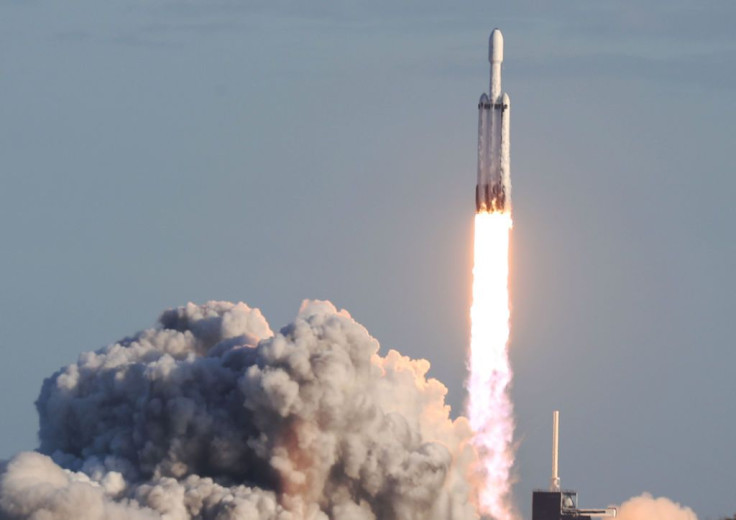SpaceX Falcon Heavy Launch Successful, Lands All Three Boosters

It was worth the wait. Falcon Heavy, the SpaceX heavy lift launch vehicle capable of lofting 64,800 kg to low Earth orbit (LEO), on Thursday successfully accomplished its first commercial launch mission and, as a bonus, also safely landed all three of its boosters back on Earth.
After a day’s delay due to strong winds at the Kennedy Space Center in Florida, Falcon Heavy lifted off at 6:35 p.m. EDT under clear skies and tolerable winds. After a few minutes, the two strap-on solid fuel boosters separated from the main booster to land side-by-side back at SpaceX’s Landing Zones 1 and 2 at Cape Canaveral Air Force Station.
The main booster then made a spot-on landing on the SpaceX “Of Course I Still Love You” drone ship in the Atlantic Ocean. All three reusable boosters are Falcon Block 9 cores.
The latest news is that the Falcon Heavy’s payload, the Saudi Arabian Arabsat-6A heavy communications satellite, has detached in the desired orbit thereby qualifying the mission as a success. Arabsat-6A was released into orbit at 7:09 p.m. EDT.
Successful deployment of Arabsat-6A to geosynchronous transfer orbit confirmed—completing Falcon Heavy’s first commercial mission! pic.twitter.com/KeKTP99xvv
— SpaceX (@SpaceX) April 11, 2019
From its geostationary orbit, Arabsat-6A will provide TV, internet, telephone, and secure communications to customers in the Middle East, Africa and Europe. Arabsat 6A is now located at 30.5° East.
The satellite was built on a modernized version of Lockheed Martin's A2100 bus with advanced innovations, including propulsion, solar arrays and electronics. It’s designed for a 15-year service life, and was manufactured in Denver, Colorado.
Wednesday’s launch was the second for Falcon Heavy following its successful maiden flight on Feb. 6, 2018 when its payload was the personal red-colored Tesla Roadster of Elon Musk. The Roadster and its dummy space suited pilot named “Starman” are now headed for the asteroid belt.
During Falcon Heavy’s maiden flight in 2018, its two booster cores made synchronized landings side-by-side in Florida. The main booster, however, missed landing on one of SpaceX’s drone ships, and instead splashed into the ocean.
© Copyright IBTimes 2025. All rights reserved.



















